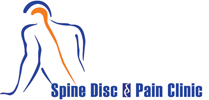Pain is one of the most common reasons for patients to seek medical attention and one of the most prevalent medical complaints in today’s world. Chronic pain has many causes and can affect any part of the body. Conditions most associated with pain include arthritis, headache, neck and back problems, cancer, neuropathies eg. Diabetic, chronic regional pain syndromes (CRPS), pelvic pain disorders, fibromyalgia, myofacial pains, herpes and trigeminal neuralgias.
Chronic pain can lead to depression, anxiety, marital & interpersonal problems, decreased productivity, unemployment, compromised social roles, isolation, financial burden, dependence, prolonged analgesics usage, decreased self esteem with behavioral changes adversely affecting mental and physical abilities, activities of daily living & ruining quality of life.
Pain still remains inappropriate & inadequately treated. Although tremendous scientific & technological advances have been made, the knowledge & techniques are highly underutilized. Untreated pain destroys people’s lives. I have had patients come in who couldn’t work or sleep or play with their children. Good pain management gave them their lives back. It is cruel to deny people in pain access to effective pain treatment. People should not be suffering needlessly.
Thus, pain clinics are specialized areas that are now assuming the role of an essential service as they meet a need unmet by any previously existing medical facility. They help by simultaneously treating the physical, emotional, cognitive, behavioral, vocational and social aspects of chronic pain cost-effectively.
Our ultimate goal is to cure & care people suffering from pain, make them productive human beings for the society and increase their self esteem so that they can live life as normal individuals.
Interventional pain procedures scores over both medicine and surgery, as they do not have side effects like medicines. Surgeries for pain, have now limited indications, usually as a last resort.
The interventional pain procedures produce immediate pain relief, can be performed with ease by pain physicians without anesthesia as outpatient or daycare and adequate duration of pain relief obtained and suitable for surgically unfit & debilitated patients, procedure can be repeated safely if required.
In the absence of proper education among health care professionals and lack of awareness in the public mind in India, there is misuse of painkillers resulting in high incidence of complications like gastritis, kidney failure, bone marrow depression and bleeding from gut which can be catastrophic.
CARPAL TUNNEL SYNDROME—
It is neuralgic/tingling pain in hand & forearm caused by the pressure on supplying Median Nerve in carpal tunnel, aggravated during sleep or heavy exertion. It can be treated effectively with medicines. Non responders can go for simple injection treatment with dramatic results. Surgery remains the last choice only.
Fibromyalgia and Myo-fascial pain syndrome
These are conditions characterized by pain in the muscles following severe spasm associated with morning stiffness, disturbed sleep, a feeling of swelling and have clear trigger points. These points are tender and when palpated produce the typical pain.
Complex regional pain syndrome (CRPS)
CRPS is a chronic progressive disease characterized by severe pain, swelling and changes in the skin. Though treatment is often unsatisfactory, early multimodal therapy can cause dramatic improvement or remission of the syndrome in some patients. The International has divided CRPS into two types based on the presence of nerve lesion following the injury.
* Type I, formerly known as reflex sympathetic dystrophy (RSD), Sudeck’s atrophy, reflex neurovascular dystrophy (RND) or algoneurodystrophy, does not have demonstrable nerve lesions.
* Type II, formerly known as causalgia, has evidence of obvious nerve damage.
The cause of this syndrome is currently unknown. Precipitating factors include injury and surgery, although there are documented cases that have no demonstrable injury to the original site.
The symptoms of CRPS usually manifest near the site of an injury, either major or minor. The most common symptoms overall are burning and electrical sensations, described to be like “shooting pain.” The patient may also experience muscle spasms, local swelling, abnormally increased sweating, changes in skin temperature and color, softening and thinning of bones, joint tenderness or stiffness, restricted or painful movement.
See more at: http://spinenpain.com/diseases/chronic-pain/#sthash.E59WC542.dpuf








No Comments
This post is password protected. Enter the password to view any comments.